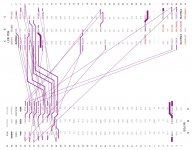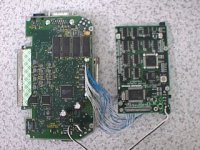Obviously a SCSI based Ethernet card caters to a different problem than built in Ethernet or add-on boards.... and doesn't have the advantage of being able to use a DeclROM driver..
That said it is a solution that doesn't require opening your Mac or interfering with other modifications... so there is a case for both (the built in or add-on on board is going to be better/faster most likely... but less flexible in what other mods you add).
That said it is a solution that doesn't require opening your Mac or interfering with other modifications... so there is a case for both (the built in or add-on on board is going to be better/faster most likely... but less flexible in what other mods you add).



